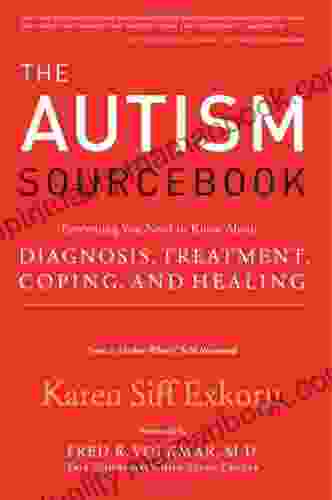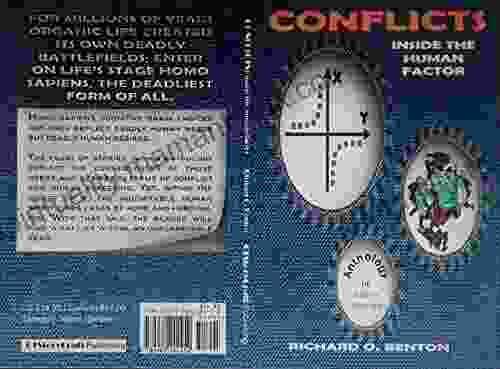Unveiling the Complex and Interwoven Conflicts Within the Human Factor

5 out of 5
| Language | : | English |
| File size | : | 2498 KB |
| Text-to-Speech | : | Enabled |
| Screen Reader | : | Supported |
| Enhanced typesetting | : | Enabled |
| Word Wise | : | Enabled |
| Print length | : | 107 pages |
| Lending | : | Enabled |
The human factor, a term encompassing the influence of human behavior and cognition on systems and activities, is a multifaceted and often enigmatic element in various fields, including engineering, psychology, medicine, and safety. Embedded within this complex concept lies a myriad of conflicts that can significantly impact outcomes. These conflicts, rooted in the inherent complexities of human nature, present challenges and opportunities for understanding and managing human performance.
Origins of Conflicts Within the Human Factor
The conflicts within the human factor arise from a combination of internal and external factors. Internally, cognitive biases, emotional influences, and individual differences can lead to inconsistencies in decision-making, communication, and behavior. Externally, factors such as organizational culture, social pressures, and environmental conditions can interact with human characteristics to create conflicts.
Cognitive Biases
Cognitive biases are systematic errors in thinking that can lead to irrational judgments and decisions. These biases, often subconscious, can arise from various factors, such as limited attention, selective perception, and the desire for cognitive closure. In the context of the human factor, cognitive biases can lead to errors in risk assessment, decision-making under stress, and communication.
Emotional Influences
Emotions, powerful drivers of human behavior, can significantly impact the human factor. While emotions can enhance performance in certain situations, they can also lead to conflicts when they interfere with rational decision-making. For instance, fear can lead to panic and impulsive actions, while anger can impair judgment and communication.
Individual Differences
Individual differences, such as personality traits, cognitive abilities, and values, contribute to the diversity of human behavior. These differences can create conflicts within teams and organizations, particularly when individuals with different backgrounds and perspectives need to collaborate effectively.
External Factors
External factors, including organizational culture, social pressures, and environmental conditions, can interact with human characteristics to create conflicts. For example, a highly competitive organizational culture can encourage individuals to prioritize personal gain over teamwork, leading to conflicts and reduced productivity.
Consequences of Conflicts Within the Human Factor
The conflicts within the human factor can have far-reaching consequences, affecting individuals, teams, organizations, and society as a whole. These consequences can manifest in various forms, including:
Human Error
Conflicts within the human factor can lead to human error, which occurs when an individual's actions fail to achieve the desired outcome. Human error can range from minor mistakes to catastrophic failures and can have significant consequences for safety, reliability, and productivity.
Organizational Conflicts
Conflicts within the human factor can also contribute to conflicts within organizations. These conflicts can arise from differences in goals, values, or communication styles. Organizational conflicts can hinder collaboration, reduce productivity, and create a negative work environment.
Societal Challenges
In the broader societal context, conflicts within the human factor can contribute to challenges such as accidents, crime, and social unrest. For instance, conflicts related to risk perception and decision-making can lead to unsafe practices and accidents. Similarly, conflicts related to social biases and discrimination can contribute to social divisions and injustices.
Resolving Conflicts Within the Human Factor
Given the significant consequences of conflicts within the human factor, finding effective ways to resolve these conflicts is crucial. Resolving conflicts requires a multifaceted approach that involves understanding the underlying causes, implementing evidence-based interventions, and fostering a culture that supports collaboration and dialogue.
Understanding Underlying Causes
The first step in resolving conflicts within the human factor is to understand their underlying causes. This involves identifying the cognitive biases, emotional influences, individual differences, and external factors that contribute to the conflict. By understanding the root causes, organizations and individuals can develop targeted interventions that address specific issues.
Evidence-Based Interventions
Resolving conflicts within the human factor requires implementing evidence-based interventions that have been shown to reduce cognitive biases, manage emotions, and promote collaboration. Such interventions include training programs, mindfulness techniques, and organizational change initiatives. By incorporating these interventions into their practices, organizations can create a more resilient and effective human factor.
Fostering Collaboration and Dialogue
Fostering a culture that supports collaboration and dialogue is essential for resolving conflicts within the human factor. This involves creating open and inclusive environments where individuals feel comfortable sharing their perspectives and working together to find solutions. Encouraging active listening, empathy, and constructive feedback can help resolve conflicts and build stronger relationships.
Conflicts within the human factor are an inherent and complex part of human behavior and cognition. These conflicts can have significant consequences for individuals, teams, organizations, and society as a whole. By understanding the origins and consequences of these conflicts, we can develop effective strategies to resolve them. Through a multifaceted approach that involves understanding underlying causes, implementing evidence-based interventions, and fostering collaboration and dialogue, we can create a more resilient and effective human factor that contributes to positive outcomes across various domains.
References
- Kahneman, D., Slovic, P., & Tversky, A. (1982). Judgment under uncertainty: Heuristics and biases. Cambridge University Press.
- Reason, J. (1990). Human error. Cambridge University Press.
- Weick, K. E., & Sutcliffe, K. M. (2007). Managing the unexpected: Resilient performance in an age of uncertainty. Jossey-Bass.
- Zohar, D. (2010). The quantum leader: New leadership for a new era. McGraw-Hill.
5 out of 5
| Language | : | English |
| File size | : | 2498 KB |
| Text-to-Speech | : | Enabled |
| Screen Reader | : | Supported |
| Enhanced typesetting | : | Enabled |
| Word Wise | : | Enabled |
| Print length | : | 107 pages |
| Lending | : | Enabled |
Do you want to contribute by writing guest posts on this blog?
Please contact us and send us a resume of previous articles that you have written.
 Top Book
Top Book Novel
Novel Fiction
Fiction Nonfiction
Nonfiction Literature
Literature Paperback
Paperback Hardcover
Hardcover E-book
E-book Audiobook
Audiobook Bestseller
Bestseller Classic
Classic Mystery
Mystery Thriller
Thriller Romance
Romance Fantasy
Fantasy Science Fiction
Science Fiction Biography
Biography Memoir
Memoir Autobiography
Autobiography Poetry
Poetry Drama
Drama Historical Fiction
Historical Fiction Self-help
Self-help Young Adult
Young Adult Childrens Books
Childrens Books Graphic Novel
Graphic Novel Anthology
Anthology Series
Series Encyclopedia
Encyclopedia Reference
Reference Guidebook
Guidebook Textbook
Textbook Workbook
Workbook Journal
Journal Diary
Diary Manuscript
Manuscript Folio
Folio Pulp Fiction
Pulp Fiction Short Stories
Short Stories Fairy Tales
Fairy Tales Fables
Fables Mythology
Mythology Philosophy
Philosophy Religion
Religion Spirituality
Spirituality Essays
Essays Critique
Critique Commentary
Commentary Glossary
Glossary Bibliography
Bibliography Index
Index Table of Contents
Table of Contents Preface
Preface Introduction
Introduction Foreword
Foreword Afterword
Afterword Appendices
Appendices Annotations
Annotations Footnotes
Footnotes Epilogue
Epilogue Prologue
Prologue Joe Caldwell
Joe Caldwell America S Test Kitchen
America S Test Kitchen Micah Toll
Micah Toll Kendare Blake
Kendare Blake Elizabeth Mccallum Marlow
Elizabeth Mccallum Marlow Christina Delia
Christina Delia Serhii Plokhy
Serhii Plokhy John Bloom
John Bloom Arlene Lee
Arlene Lee Pamela Williams
Pamela Williams Daniel Millhouse
Daniel Millhouse Tina Smith
Tina Smith Dreda Say Mitchell
Dreda Say Mitchell Maxine Thompson
Maxine Thompson John Grumps Hamshare
John Grumps Hamshare Scott Bridges
Scott Bridges Jennifer Weiner
Jennifer Weiner David Foster Wallace
David Foster Wallace M M Dowden
M M Dowden Kenneth J Smith
Kenneth J Smith
Light bulbAdvertise smarter! Our strategic ad space ensures maximum exposure. Reserve your spot today!

 Alan TurnerEverything You Need to Know About Diagnosis, Treatment, Coping, and Healing...
Alan TurnerEverything You Need to Know About Diagnosis, Treatment, Coping, and Healing...
 Hudson HayesBecome Your Own Financial Advisor: A Comprehensive Guide to Taking Control of...
Hudson HayesBecome Your Own Financial Advisor: A Comprehensive Guide to Taking Control of...
 Graham BlairUnveiling the Literary Treasures of Michigan: A Journey Through the Rowing...
Graham BlairUnveiling the Literary Treasures of Michigan: A Journey Through the Rowing... Hudson HayesFollow ·10.2k
Hudson HayesFollow ·10.2k Matthew WardFollow ·17.1k
Matthew WardFollow ·17.1k Rudyard KiplingFollow ·9.1k
Rudyard KiplingFollow ·9.1k Jeremy MitchellFollow ·14.1k
Jeremy MitchellFollow ·14.1k Leo TolstoyFollow ·16.6k
Leo TolstoyFollow ·16.6k Chad PriceFollow ·4k
Chad PriceFollow ·4k Ronald SimmonsFollow ·8.5k
Ronald SimmonsFollow ·8.5k Guillermo BlairFollow ·2.2k
Guillermo BlairFollow ·2.2k

 Thomas Powell
Thomas PowellHair Care Essentials for Crochet Braids: A Protective...
Crochet braids are a versatile and...

 Philip Bell
Philip BellNative Nations of North America: A Comprehensive Guide
North America is home to a...

 Jackson Hayes
Jackson HayesCall Me Crazy: My Unique Journey with Green
In the kaleidoscopic tapestry of life, where...

 Graham Blair
Graham BlairUnveiling the Literary Treasures of Michigan: A Journey...
The literary landscape of...
5 out of 5
| Language | : | English |
| File size | : | 2498 KB |
| Text-to-Speech | : | Enabled |
| Screen Reader | : | Supported |
| Enhanced typesetting | : | Enabled |
| Word Wise | : | Enabled |
| Print length | : | 107 pages |
| Lending | : | Enabled |










